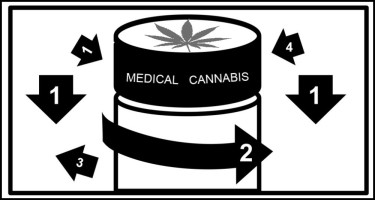
What every cannabis company should know about accessible products and services
Medical marijuana is used extensively to treat numerous diseases that cause disabling in patients.
Some of these conditions include chronic pain, arthritis, cancer, nerve pain, back pain, Alzheimer’s, dementia, Parkinson’s and many more. But while marijuana manufacturers and the laws have forced companies to design packaging that is child-resistant and not handicapped accessible. Additionally, seniors are one of the fastest growing demographics to use cannabis, although the way cannabis is commonly produced in many forms, most of it is by no means disability-friendly.
Cannabis companies should also know that the Americans with Disabilities Act (ADA) requires all businesses to eliminate any feature that makes it difficult for disabled people to access their services or goods online. They may appear to discriminate against people with disabilities when there are “physical, transportation and communication barriers” that allow access for people with disabilities to use their services like normal people. Cannabis companies can be taken to court for these purposes, and some have done so in the past.
Child-resistant packaging makes it particularly difficult for the elderly and other people with disabilities to access their medication. Imagine you’re suffering from a severe episode of pain and can’t open a container of edibles or other medication? These types of packages can take up to 10 minutes to open, even if they are already in your hands.
Pharmacies and businesses should make it a priority to allow all customers easy access to their facility. Here’s what pharmacies can do to make medicine more accessible to people with disabilities:
wheelchair accessibility: In the United States, one of the most common types of disabilities affecting people is mobility issues. Building ground level entrances or ramps will bring great benefits to your customers. If the main entrance is far away or on a different floor, you can offer a disabled parking space where disabled people can get and pay for their medication.
save signs: Each area of your pharmacy should be properly labelled. Be sensitive to the language you use when referring to people with disabilities and do not refer to people in wheelchairs as wheelchair users.
Accessibility of the website: Customers should be able to easily search and buy products when they visit your website. Do you make it easy for people with visual impairments to see all the content and information on your website? Are there numerous obstacles in the form of flashing banners that can cause seizures? Are all visitors given adequate time to read the content with appropriate calls to action? It may be time to redesign your website to make it more accessible.
staff training: Training your pharmacy staff is a crucial step in making your business more disability-friendly. It will have a significant impact on how they deal with disabled customers and you will always want to ensure that everyone – especially those with impairments – leave with a positive experience. It is an unfortunate fact that people with disabilities are unfairly vulnerable to mistreatment and treated as second-class citizens.
Disability-friendly cannabis products
Disabled consumers and their families need to find ways to provide immediate access to those who need their medicines. Some time-saving preparation is often required, e.g. B. Putting flowers and edibles in an easy-to-open, reusable container so you can take medication when you need it without hassle.
Those who treat with flowers also have the option of using automatic grinders and jointed lathes, which can do the job for you much faster. Keep your blunts and joints safe in a container that’s easy to access when needed. On the other hand, the visually impaired can benefit from using cannabis flowers stored in medicine jars, which make it easy to tell them apart using just their sense of smell. Vape cartridges and oils are not ideal for the visually impaired.
Using sublingual products is also ideal for people with disabilities, provided the dropper bottles are easy to open. Simply place a few drops under your tongue for instant relief.
Child-resistant packaging such as lidded jars, push-down-and-turn vials, twist-top vials and tubes are taboo. These are only frustrating for people who have trouble using their hands or have other mobility issues.
Cannabis edibles and beverages are also excellent choices, largely because you don’t have to keep refilling your meds throughout the day. Infused foods and drinks can last throughout the day. In addition, they offer the added benefit of being easy to dose, as the packaging already says exactly how much you should take.
Conclusion
While much remains to be done in the medical marijuana industry to accommodate people with disabilities, continuing this conversation can ensure that those who don’t have a voice are given a voice. It is up to the disabled patients and their families to do what is possible with the resources that are available in your area so that people do not have to fight to get medicine when they need it.
Finally, marijuana should be inclusive: At the end of the day, it’s medicine, so companies should always consider the roadblocks faced by the people who need it most. Fortunately, there are solutions and choices for people who are struggling with product packaging or their method of consumption.
DISABLED IN THE CANNABIS WORLD READ THIS…

DOES CHILD-RESISTANT PACKAGING EXCLUDES PATIENTS?

Post a comment: